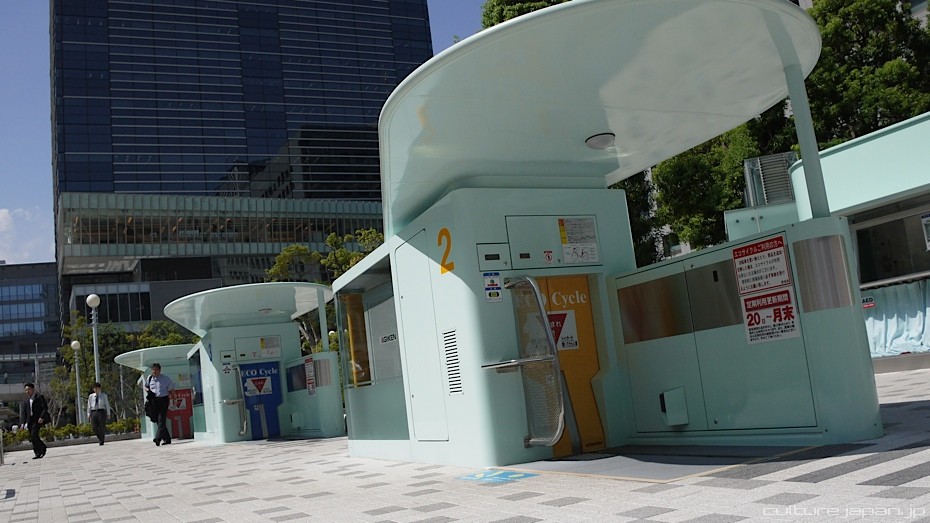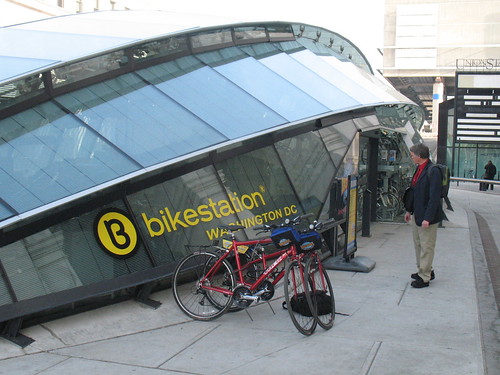Innovative bike parking solutions that save space
New York continues to struggle with a lack of infrastructure for its bike share program, resulting in crowded docking stations. Meanwhile, other cities across the world have already adopted innovative bike parking solutions that feature intelligent uses of space above and below ground.
Here’s a round-up of a few unusual and interesting bike parking solutions that use automated and manual systems to counter problems like space constraints and bike theft. They’re good for the environment too!
Robotic parking solutions
Robotic bike parking systems are technological marvels that store bikes vertically in towers above or underground. Robotic car parking has gained popularity in the US, and similar systems for bikes are comparatively new. Since robotic bike parking makes economic sense, it is likely to stay. Real estate developers have more space if automated parking is used. Also, such systems can protect bikes from weather abuse and theft.
Meckenbeuren, Germany
Last year, Europe’s first public solar recharging station for electric bikes opened in Southern Germany, at Meckenbeuren train station. This Biketower is part of an automated bike parking system that can store 112 bikes. Users have to pay a rental fee to use the Biketower. It covers just 30 square meters.
Hradec Kralove, Czech Republic
A robotic bike parking tower in the city of Hradec Kralove, Czech Republic can store 117 bikes on its seven tiers. It has a mechanical unit in the centre with paddles to hold the bike’s front wheel in its mounting cradle. This unit then rises to put the bike in a bay. It takes just 30 seconds to get the bike out of the bay. It costs around 25 cents to park a bike here.

Eco Cycle, a robot system, stores bikes underground in an 11 meter deep well (image by danychoo.com).
Jiyugaoka, Tokyo
Japan’s infamously high real estate prices led to the creation of underground bike parking towers as far back as 2008. In Jiyugaoka, Tokyo, two forty-foot deep underground silos can each store 200 bikes. A chip inside an attachment opens the loading bay doors when you push the bike near it. It takes only eight seconds to store or retrieve a bike. Students can pay a monthly fee of 1,300 yen to park their bicycles here, while others have to pay 1,800 yen a month to do so. This system frees up valuable space above ground.
Spain
B-igloo is a structure where bikes are “stored in independent locked containers.” Only the bike owner has access to his or her container. It takes under 10 seconds to receive and return the bike at street level. This is done using b-igloo parking cards with chips, which store user information. A b-igloo costs $72,000 to set up and can store up to 24 bikes.
The system is eco friendly because B-igloo uses recyclable materials to manufacture it. Also, a single parking operation uses just .01 Kw of power. Optional photovoltaic collectors help power the system.
Manual parking solutions
Innovative non-robotic, or manual, parking solutions include bike storage systems that are more simplistic in their design. These systems make use of available above-ground space to do two things: prevent bike theft and look awesome!

The Washington D.C. Bikestation. Image by MoBikeFed.
Washington D.C.
Although Washington D.C. doesn’t have a robotic bike parking system, it has a very efficient bike storage system next to Union Station. It came up to counter the problem of bike theft there. Many take the metro into the city and then bike to work. The Bikestation has 140 spaces on its double decker racks. “A partially open structure takes advantage of passive airflow to help lessen the need to heat and cool inside the parking area.” Membership plans for service range from daily ($1, available in increments of 10), monthly ($12) to annual ($96). All, however, have an additional annual administrative fee of $20.
Seoul, Korea
New York based Manifesto Architecture entered their design, the Bicycle Hanger, in the 2010 Seoul Cycle Design Competition. The bike parking system uses empty vertical space in buildings. One unit can hold 20 – 36 bikes.
To the Bicycle Hanger, you first lock your bike on an empty hanger. Next, you pedal on a stationary bike that is connected to the rack. Pedal power gets your bike up the wall and brings it back to you. Even though bikers have to pay only $15 a year to use this low-maintenance and eco-friendly option, the construction cost of this project runs up to $100,000. The high primary cost of this parking system might prove to be a roadblock for penny-pinching cities looking to implement this idea.

Ascobike. Image by Treehugger.
Sao Paulo, Brazil
Ascobike, an hour from São Paulo, Brazil, is the largest bike parking in the Americas. 1,700 bikes park there daily for a monthly fee of $5. The parking consists solely of long white racks with hooks. This means lower power consumption. Train commuters who work in the city park their bikes here.
Such a system also has the job-generating potential that many automated systems may lack.
Ascobike is more than a bike parking facility; it’s also a forum for bike-related conversations. A lawyer comes in daily to help bikers with any issues they may be facing. The staff also educates bikers about traffic.
Related Posts
Category: News




















